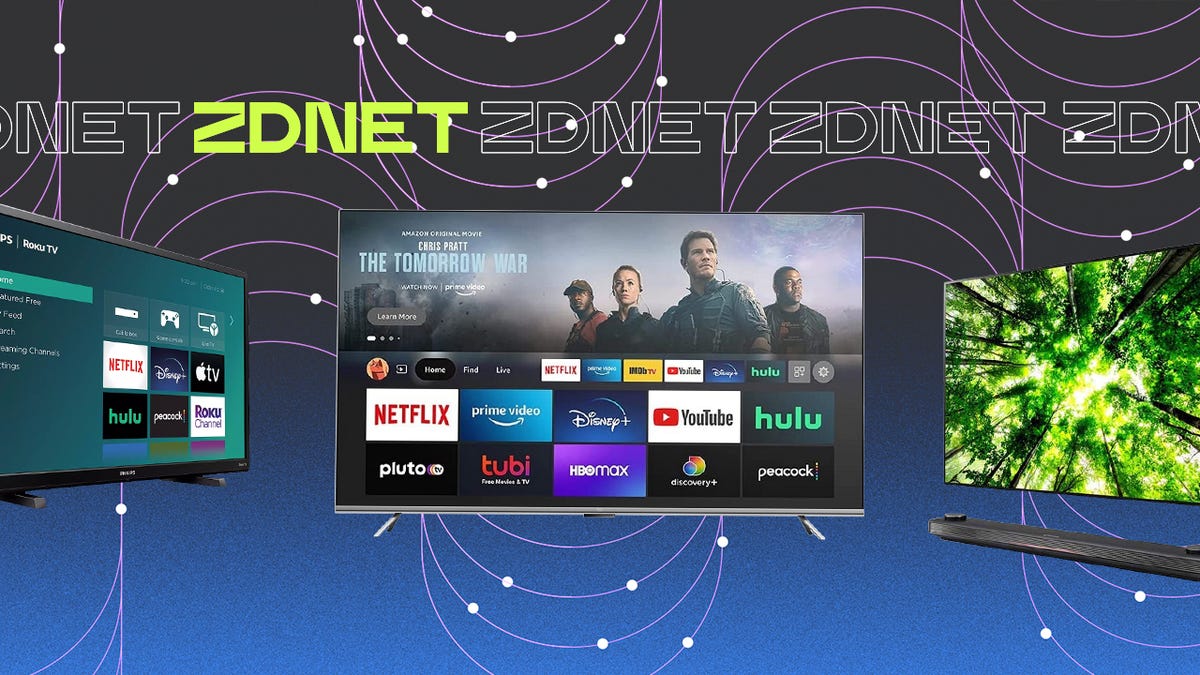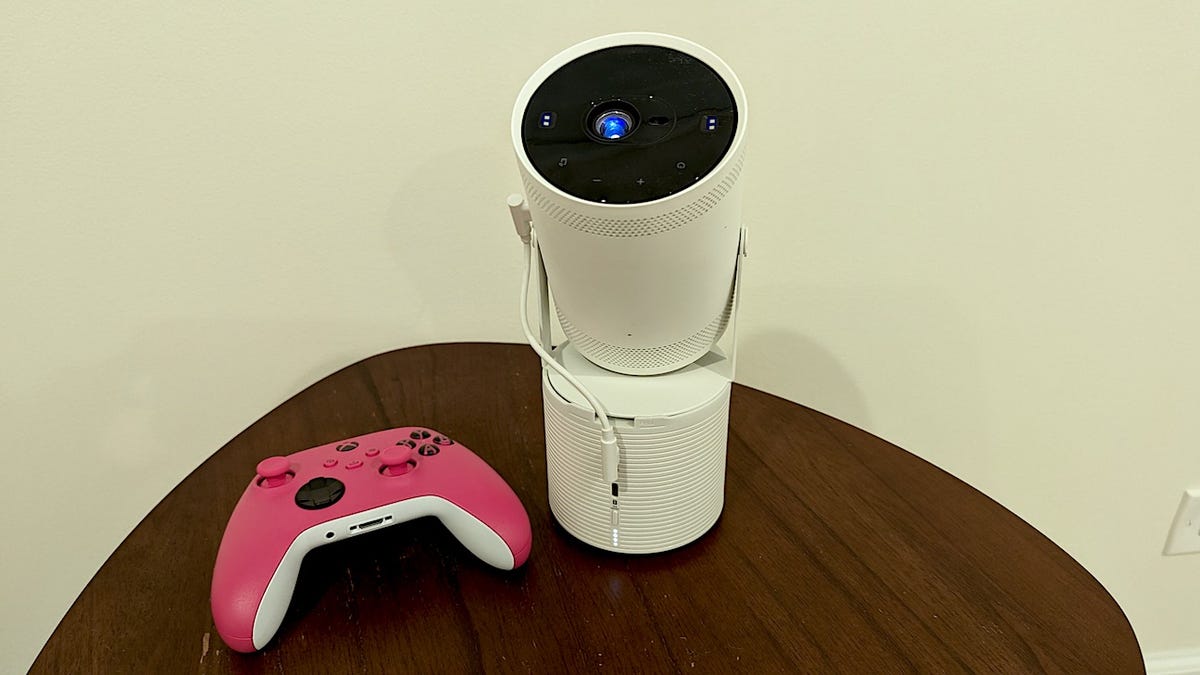BOOK THIS SPACE FOR AD
ARTICLE ADI've been using the M4 MacBook Pro for about a week now, and it's the most boringly awesome device I've tested this year.
Without making my 14-inch M1 MacBook Pro jealous, the newest model is Apple's most polished and complete laptop yet, to the point where the base M4 configuration may just be good enough for 90% of users. Most people will be delighted by the M4 MacBook Pro's overall computing experience, especially if they're coming from an Intel-based system.
Also: The new M4 Mac Mini might be the most lovable Mac ever - for two reasons
A smaller percentage -- the enthusiasts -- will absolutely salivate over the finer touches, from the changes to the USB-C ports to the brighter screen in SDR mode. In fact, the base M4 model -- not the M4 Pro or M4 Max -- is precisely the one I've been lugging around town, and it's got all the bells and whistles I need to push through rigorous amounts of photo and video editing, gaming (with all the rays traced), and content consumption.
I'm on hour 11 since last charge, and this laptop has 20% of battery left in the tank. That's not exactly the "24-hour battery life" that Apple touts in its marketing, but remember that the company benchmarks by hours of video playback only. With various creative tasks and background apps running, I've been very impressed with the M4 MacBook Pro's endurance. If it were my M1 MacBook Pro, my battery anxiety would've kicked in much earlier.
Also: My favorite feature on Apple's iMac M4 might be one of the least talked about
The new M4 Pro and M4 Max MacBook Pros feature USB-C Thunderbolt 5 ports, becoming some of the first laptops on the market to support faster 120Gbps transfer speeds, up to 240W charging, and more robust monitor support. For professional creatives who use external GPUs and storage solutions and need a portable system that can swiftly move large files, paying for the extra processing power is justifiable.
This year, the base MacBook Pro gets the Space Black treatment, and it looks fantastic.
Otherwise, the base M4 MacBook Pro is more than competent, with its now three USB-C Thunderbolt 4 ports. Not only is the additional USB-C port situated on the right side of the laptop, which plays nicer with all the monitor and charging cables that naturally reside on the right side of my office desk, but the new processor allows the computer to extend up to two monitors while the lid is open. Previously, you'd have to close the MacBook lid in order to power two external monitors.
Besides the ports, the only major hardware difference between the base M4 MacBook Pro and the M4 Pro and M4 Max variants is the number of cooling fans, with the higher-tier options having two instead of one. While I haven't been able to test the difference in throttling and heat dissipation of all three systems, I've been satisfied with the base M4's performance. Whether I was running benchmarks or playing Myst on high graphical settings and with ray tracing active, the laptop's fan never hissed in a distracting, "tapping out" manner.
Also: Every Apple Mac announcement from October - and what models we're still waiting for
Before I jump into benchmarks, I'd like to give a nod to the M4 MacBook Pro's display. The 14-inch model doesn't have the same punchiness and depth as the tandem OLED on the M4 iPad Pro, but the new brightness rating -- 1,000 nits at SDR and 1,600 nits at HDR -- paired with the optional, expensive, and satisfying clean nano-texture coating makes this the best-looking laptop display I've used. The matte-frosted layering significantly reduces glare, while the brighter panel just manages to beat out the November sun, which still thinks it's summer.
With the M1 MacBook Pro -- and every other laptop with a glossy display -- I often found myself smudging the webcam area when lifting the lid or wiping off a dust mark. On the M4 MacBook Pro, after a week of intensive use, the display remains clean and pristine.
Here's the iPhone 16 Pro's glossy panel versus the M4 MacBook Pro's nano-texture glass.
So, is the $150 upcharge for the nano-texture display worth it? For most people, no. Instead, consider picking up a matte screen protector from Amazon for less than $20. You'll be nearly as satisfied for more than a fraction of the cost.
Now, here's a breakdown of the M4 MacBook Pro (with a 10-core CPU, a 10-core GPU, 16GB of RAM, and 1TB of storage) benchmark scores:
Cinebench 24 MC | Geekbench 6.2.2 SC | Geekbench 6.2.2 MC | |
Apple MacBook Pro with M4 | 1,000 | 3,823 | 14,849 |
Apple MacBook Pro with M3 | 906 | 3,072 | 11,623 |
Apple MacBook Pro with M1 Pro | 828 | 2,211 | 12,482 |
Lenovo Yoga Slim 7i with Intel Core Ultra 7 258V (Series 2) | 507 | 2,736 | 10,887 |
Unsurprisingly, the M4 MacBook Pro outperforms its predecessors, as well as some of the latest Windows machines running on Qualcomm Snapdragon X Elite and Intel Core Ultra (Series 2) chipsets. It's quite spectacular to see the $1,599 M4 MacBook Pro outpacing a 16-inch MacBook Pro with an M1 Pro chip that I paid almost $3,000 for.
Also: iOS 18.1 with Apple Intelligence is here. Try these 5 AI features first
It helps that every MacBook model (including the M2 and M3 Air) now starts at 16GB of RAM; We have AI to thank for that. Most of the features of the for-consumer Apple Intelligence won't be readily available when you pick up a compatible device, but I've been toying with the MacOS Sequoia 15.2 developer beta to get a taste of what life is like when I spend less time thinking while using the MacBook. Here's a brief tier list of the best new features:
ChatGPT-powered Siri (A tier): It's quite game-changing when Siri can actually answer more sophisticated queries instead of populating search results. It's also been great being able to access a floating Siri menu by double-pressing the command key, though I'd love to be able to automatically start a voice prompt with a long press. Writing Tools (B tier): From CES invitations to real estate messages, I've been needing to manage various conversations and have greatly benefitted from the AI-assisted responses. The only thing is, my natural tone is somewhere between the "Professional" and "Concise" versions, so there's always a thing or two that needs to be dialed down or spiffed up.Image Playground (C tier): Besides the output from the image generator looking like variants of the Jetpack Joyride icon, I've been struggling to find a practical, real-world use for it. Oftentimes, sending an emoji gets the same point across as an AI-generated thumbnail, and for much less time. Kerry Wan/ZDNETZDNET's buying advice
For the same price as last year's MacBook Pro models, the M4 variants -- particularly the base configuration -- offer notable upgrades in performance, utility, and battery life. The introduction of Thunderbolt 5 ports, an M4 processor that's better built for machine learning, a more capable webcam, and a brighter display funnel into a form factor that should play well with office workers, digital nomads, students, professional creatives, and more.
For most users, the 14-inch M4 MacBook Pro is the way to go. If you need more internal storage than the 512GB, bumping up to the 1TB tier for $200 is not the worst idea. Beyond that, I'd advise picking up an external SSD, which gives you more storage than what Apple does and for significantly less money.
If you're after portability and can live without features like the ProMotion display and an SD card slot, you won't miss out on much by opting for the less expensive (but still capable) M3 or M2 MacBook Air, which even support the upcoming Apple Intelligence features.
.png)
 2 weeks ago
23
2 weeks ago
23 















 Bengali (Bangladesh) ·
Bengali (Bangladesh) ·  English (United States) ·
English (United States) ·